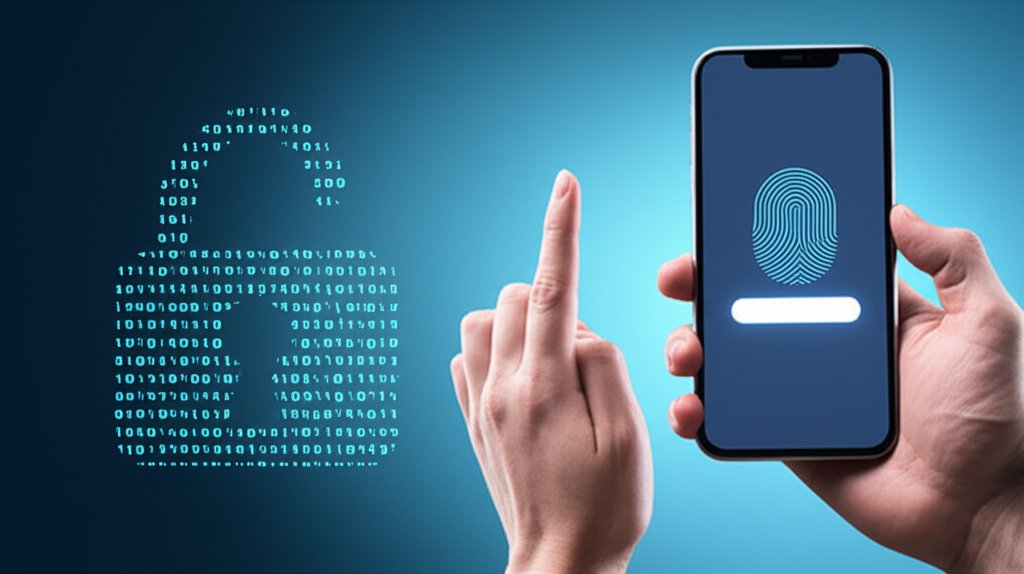For years, our security models were akin to a fortified castle: strong perimeters, but once an attacker breached the walls, they often had free reign within. That’s a notion that’s just not viable anymore, isn’t it? With distributed systems, ephemeral microservices, hybrid and multi-cloud environments, and the omnipresent reality of remote work, the traditional “network perimeter” has effectively dissolved. We’re facing an increasingly complex threat landscape where every interaction, every access request, needs explicit scrutiny. This brings us to Zero Trust Architecture (ZTA), a paradigm that fundamentally shifts our approach from implicit trust to explicit verification.
But how do we verify without a clear, unassailable identity? That’s precisely where robust Identity Management (IAM) systems don’t just complement ZTA; they form its very bedrock. In this deep dive, we’re not just explaining the concepts; we’re breaking down the architecture, design decisions, and practical implementation strategies for building identity-driven Zero Trust solutions that truly protect your digital assets in today’s demanding environments.
Problem Statement: The Erosion of the Perimeter and the Imperative for Zero Trust
As security professionals and developers, we’ve witnessed the limitations of traditional, perimeter-centric security models firsthand. The outdated assumption that everything inside the network is inherently trustworthy, and everything outside is hostile, is now fundamentally flawed. Attackers exploit weak internal controls, insider threats are a persistent concern, and the proliferation of SaaS applications, mobile devices, and IoT endpoints means that organizational data resides far beyond any singular firewall. Breaches aren’t a matter of “if” but “when,” making implicit trust a critical vulnerability in our security posture.
Our challenge is clear: we must engineer systems that operate under constant suspicion, where every access request—whether originating from inside or outside the traditional network boundary—is rigorously authenticated, authorized, and continuously validated. This is the core tenet of Zero Trust, and without a robust identity foundation, it remains an aspiration rather than a reality.
Understanding Zero Trust Principles: Identity as the New Perimeter
At its heart, an identity-driven Zero Trust architecture assumes that no user, device, or application is inherently trustworthy, regardless of its location. Every access request is rigorously verified. IAM isn’t merely a component within this model; it’s the central nervous system that provides the “who” and “what” necessary for the “verify explicitly” principle. It’s the engine driving the decision-making process for all access to sensitive resources.
Key Principles of Identity-Driven Zero Trust
- Verify Explicitly: Always authenticate and authorize based on all available data points, including user identity, location, device health, service, and data classification.
- Least Privilege Access: Grant users and systems only the minimal permissions required to perform their legitimate functions.
- Assume Breach: Design and operate your security with the assumption that your environment is already compromised. Continuously monitor for threats and limit blast radius.
- Microsegmentation: Segment networks into small, isolated zones to limit lateral movement and contain breaches.
- Multi-Factor Authentication (MFA) Everywhere: Mandate strong authentication beyond just passwords for all access points.
- Continuous Monitoring & Validation: Access isn’t a one-time grant. Continuously monitor context and re-evaluate authorization throughout a session.
Architecture Overview: Zero Trust with IAM at its Core
Let’s visualize the conceptual flow for how an identity-driven Zero Trust system operates:
User/Device/Application Request --> Policy Enforcement Point (PEP)
| V Policy Decision Point (PDP) (Queries Identity Provider, Access Policy Store, Device Posture Service) | V Access Grant/Deny (PEP enforces) | V Continuous Monitoring (Logs to SIEM/SOAR for analysis)
In this flow, the PEP is our gatekeeper, intercepting every request for access. The PDP is the brain, deciding whether to grant access based on real-time context—and crucially, the identity validated by our IAM system. Every decision, every access event, contributes to our continuous monitoring efforts, because even after access is granted, we’re still watching for anomalous behavior.
Core Components of an Identity-Driven Zero Trust Solution
To implement this architecture effectively, we rely on a suite of integrated systems:
- Identity Provider (IdP): This is our definitive source of truth for identities. Leading solutions like Okta, Azure Active Directory, Google Cloud Identity, or Auth0 handle user authentication, identity federation, and often single sign-on (SSO), proving who a user or service account truly is.
- Multi-Factor Authentication (MFA) Service: A non-negotiable component. MFA (e.g., FIDO2, biometrics, hardware tokens, authenticator apps) adds essential layers of authentication, ensuring that even if a password is compromised, access remains protected.
- Access Policy Store: This central repository (e.g., a database, directory service, or policy engine like OPA) houses our granular access policies. It defines “who can access what, under what conditions,” often using Attribute-Based Access Control (ABAC).
- Policy Decision Point (PDP): Evaluates access requests against policies, device posture, and user identity in real-time. It makes the “go/no-go” decision.
- Policy Enforcement Point (PEP): The actual enforcer. This could be a reverse proxy (e.g., NGINX, API Gateway), network access control (NAC) solution, cloud security group, or service mesh sidecar (e.g., Istio). It grants or denies access based on the PDP’s decision.
- Device Posture Service: Assesses the health and compliance of devices attempting access (e.g., ensuring they are patched, encrypted, free of malware, and running required security agents). Solutions like Microsoft Endpoint Manager or Jamf often contribute to this.
- Microsegmentation Tools: Divides networks into smaller, isolated zones, limiting lateral movement for attackers. This can be achieved through network firewalls, cloud security groups, Kubernetes Network Policies, or service meshes.
- Security Information and Event Management (SIEM) / Security Orchestration, Automation, and Response (SOAR): Collects logs and telemetry from all components for continuous monitoring, threat detection, behavioral analysis, and automated response. Examples include Splunk, Microsoft Sentinel, or Elastic SIEM.
- Privileged Access Management (PAM): Manages and secures accounts with elevated permissions, implementing just-in-time access and session recording for critical infrastructure. Tools like CyberArk, Delinea, or HashiCorp Boundary are essential here.
Designing Your Zero Trust Identity Solution: Key Decisions
When we’re designing these systems, several critical decisions shape our implementation and overall security posture:
- IAM Protocol Selection: Do we use OAuth 2.0 with OpenID Connect (OIDC) for API and web application security, especially in modern cloud-native environments? SAML for enterprise SSO with legacy applications? Or perhaps something like SCIM for automated identity provisioning and de-provisioning? OIDC and OAuth 2.0 are often preferred for their flexibility and API-first approach, making them ideal for microservices and mobile applications.
- Access Control Model:
- Role-Based Access Control (RBAC): Simpler for smaller systems, where roles map directly to permissions. E.g., “Developer” role can access “Code Repo.”
- Attribute-Based Access Control (ABAC): More granular and flexible, defining access based on multiple attributes (user, resource, environment, action). This aligns more closely with Zero Trust’s contextual verification. We can define policies like “only users from the ‘Finance’ department, accessing a ‘financial report’ resource, from a ‘corporate device,’ during ‘business hours,’ can perform the ‘view’ action.” ABAC significantly enhances the “verify explicitly” principle.
- Policy Engine Placement: Should the PDP be centralized or distributed? A centralized PDP simplifies management but can create a bottleneck. Distributed PDPs (e.g., embedded in service meshes like Istio, or local agents running Open Policy Agent – OPA) improve performance and resilience by moving decisions closer to the resource but increase deployment complexity.
- Policy-as-Code: Managing policies in source control (e.g., OPA with Rego, or cloud-specific policy frameworks like AWS IAM Policies or Azure Policy) ensures consistency, auditability, and seamless integration with CI/CD pipelines. This treats security policies like any other piece of critical infrastructure.
- Just-in-Time (JIT) and Just-Enough-Access (JEA): A core Zero Trust principle. Granting access only when needed and for the minimal duration required significantly reduces the attack surface. This is a design decision that impacts every access request, often implemented via PAM solutions or temporary credential services.
Implementation Details: Bringing Identity-Driven ZTA to Life
Let’s get concrete with some practical examples and technologies.
Securing APIs and Microservices with OAuth 2.0/OIDC and JWTs
For securing microservices and APIs, we often rely on JSON Web Tokens (JWTs) issued by our Identity Provider. An API gateway (acting as our PEP) plays a critical role in validating the JWT before forwarding the request to the backend service. This ensures that every API call is authenticated and authorized.
GET /api/v1/users/123/profile HTTP/1.1
Host: myapi.example.com Authorization: Bearer <JWT_TOKEN> --> API Gateway (PEP) 1. Validate JWT signature and expiration (e.g., using a library like PyJWT or Nimbus JOSE+JWT). 2. Extract claims (user ID, roles, scopes, custom attributes). 3. Query PDP (e.g., Open Policy Agent) with claims and resource context (e.g., path, HTTP method). 4. If PDP grants access, forward to backend service, potentially adding enriched identity context. 5. Else, return 401 Unauthorized or 403 Forbidden.
Example Use Case: Multi-Cloud Microservices Security
A global e-commerce company operating microservices across AWS and Azure needs consistent access control. They implement a centralized IdP (e.g., Azure AD) federated with AWS IAM roles. API Gateways (e.g., AWS API Gateway, Azure API Management) act as PEPs, validating JWTs for every request. A policy engine like OPA running as a sidecar in their Kubernetes clusters provides fine-grained ABAC, ensuring that even within a cluster, services only communicate with explicit authorization based on service identity and context.
Conditional Access Policy in Python (Simplified PDP Logic)
Here’s a conceptual Python snippet demonstrating how a PDP might evaluate a conditional access policy based on user attributes, requested resource, device posture, and current risk context. This isn’t a complete system, but it illustrates the logic behind ABAC.
# Imagine this is part of our Policy Decision Point (PDP) logic
# using a simplified ABAC model. def evaluate_access(user_identity: dict, resource_requested: str, device_posture: dict, action: str, risk_score: int = 0) -> bool: """ Evaluates an access request based on identity, resource, device posture, action, and real-time risk. This is a simplified example of an ABAC-like policy evaluation. """ user_roles = user_identity.get("roles", []) user_department = user_identity.get("department") device_compliant = device_posture.get("is_compliant", False) device_location = device_posture.get("location") # e.g., "corporate_network", "external", "untrusted_VPN" # Policy 1: Only "admin" role can delete any resource, but only if risk score is low if "admin" in user_roles and action == "delete" and risk_score < 50: return True # Policy 2: "Finance" department users can view "financial_reports" only from compliant devices if user_department == "Finance" and resource_requested == "financial_reports": if action == "view" and device_compliant: return True elif action == "edit" and "finance_lead" in user_roles and device_compliant and device_location == "corporate_network" and risk_score < 30: # More stringent for edit: higher role, on corporate network, and very low risk return True # Policy 3: General users can view "public_documents" regardless of device, if risk is acceptable if resource_requested == "public_documents" and action == "view" and risk_score < 70: return True # Default deny - if no policy explicitly grants access return False # Example Usage: user1 = {"id": "user123", "name": "Alice", "roles": ["user"], "department": "Finance"} user2 = {"id": "user456", "name": "Bob", "roles": ["user", "admin"], "department": "IT"} device_good = {"is_compliant": True, "location": "corporate_network"} device_bad = {"is_compliant": False, "location": "external"} print(f"Alice viewing financial reports (good device, low risk): {evaluate_access(user1, 'financial_reports', device_good, 'view', 20)}") # True print(f"Alice editing financial reports (good device, low risk): {evaluate_access(user1, 'financial_reports', device_good, 'edit', 20)}") # False (not finance_lead) print(f"Alice viewing financial reports (bad device, low risk): {evaluate_access(user1, 'financial_reports', device_bad, 'view', 20)}") # False print(f"Bob deleting any resource (good device, high risk): {evaluate_access(user2, 'any_resource', device_good, 'delete', 60)}") # False (risk too high for admin delete) print(f"Bob deleting any resource (good device, low risk): {evaluate_access(user2, 'any_resource', device_good, 'delete', 10)}") # True
Database Schema Example (Simplified for Access Policies)
Storing our access policies and user attributes efficiently is key. Here’s a conceptual SQL schema snippet illustrating how these components might be represented:
-- Identity Provider Schema (simplified)
CREATE TABLE users ( user_id UUID PRIMARY KEY, username VARCHAR(255) UNIQUE NOT NULL, email VARCHAR(255) UNIQUE NOT NULL, hashed_password VARCHAR(255), mfa_enabled BOOLEAN DEFAULT FALSE, department VARCHAR(100), title VARCHAR(100), last_login TIMESTAMP, account_status VARCHAR(20) DEFAULT 'active' -- e.g., 'active', 'inactive', 'suspended' ); CREATE TABLE user_attributes ( user_id UUID REFERENCES users(user_id), attribute_key VARCHAR(100) NOT NULL, attribute_value VARCHAR(255) NOT NULL, PRIMARY KEY (user_id, attribute_key) ); CREATE TABLE roles ( role_id UUID PRIMARY KEY, role_name VARCHAR(50) UNIQUE NOT NULL, description TEXT ); CREATE TABLE user_roles ( user_id UUID REFERENCES users(user_id), role_id UUID REFERENCES roles(role_id), PRIMARY KEY (user_id, role_id) ); -- Access Policy Store Schema (simplified for ABAC) CREATE TABLE policies ( policy_id UUID PRIMARY KEY, policy_name VARCHAR(255) UNIQUE NOT NULL, description TEXT, resource_pattern VARCHAR(255) NOT NULL, -- e.g., /api/v1/financial_reports/*, s3://my-bucket/sensitive-data/* action VARCHAR(50) NOT NULL, -- e.g., 'view', 'edit', 'delete', 'download' policy_json JSONB -- Stores the complex attribute conditions and rules ); -- Example policy_json for "Finance" user, compliant device, corporate network, view financial reports -- { -- "user_attributes": { "department": "Finance", "account_status": "active" }, -- "device_attributes": { "is_compliant": true, "location": "corporate_network" }, -- "environmental_conditions": { "time_of_day": "business_hours" }, -- "risk_threshold": 30 -- }
This structure allows for highly flexible and contextual policy evaluation, which is fundamental to a robust identity-driven Zero Trust strategy.
Scalability and Performance Optimization for Identity-Driven Zero Trust
As our systems grow, identity and access management can become performance bottlenecks if not designed for scale. Addressing this proactively is critical for user experience and system resilience.
Strategies for Scalability
- Distributed Identity: For global enterprises, federating identities across multiple IdPs or regions (e.g., using a global identity service like Azure AD or Okta Universal Directory) ensures availability and reduces latency for geographically dispersed users.
- Eventual Consistency for Identity Data: When propagating identity or policy changes, strict immediate consistency might not always be necessary or feasible, trading it for performance and resilience. Understand where eventual consistency is acceptable.
- Caching: Caching user attributes, policy decisions, and JWTs at PEPs or API gateways significantly reduces load on IdPs and PDPs. Careful invalidation strategies (e.g., short-lived tokens, webhooks for policy changes) are crucial to prevent stale access decisions.
- Stateless PEPs: Designing PEPs to be stateless simplifies scaling horizontally and improves resilience, as any PEP instance can handle any request without prior session knowledge.
- Microservices for IAM: Breaking down IAM into granular services (e.g., dedicated authentication service, authorization service, user profile service) allows independent scaling and reduces single points of failure.
Strategies for Performance Optimization
- Edge Authorization: Performing initial policy evaluation closer to the user (e.g., at a CDN edge, regional gateway, or even within a browser using WebAuthn) reduces round trips to a central PDP, minimizing latency.
- Optimized Policy Evaluation: Using efficient policy engines and well-structured policies is vital. Pre-compiling policies where possible (e.g., OPA bundles) or using highly optimized rule engines can dramatically speed up decision-making.
- JWT Granularity: Balance the amount of information in a JWT. Too much, and it becomes large, slow to transmit, and can expose sensitive data. Too little, and the PEP/PDP has to make more external calls. Design tokens to carry just enough information for initial authorization, with further details fetched on demand.
- Asynchronous Identity Provisioning: Don’t block user access or critical operations on slow identity synchronization tasks. Use event-driven architectures for provisioning and de-provisioning.
Trade-offs Analysis: Balancing Security, Usability, and Cost
No architecture is without its compromises. Implementing identity-driven Zero Trust requires careful consideration of various trade-offs. For a deeper look into potential challenges, you might read about Zero-Trust Failures: Pitfalls & How to Avoid Them:
- Security vs. Latency/User Experience: More stringent authentication and authorization (e.g., step-up authentication based on risk, continuous re-authentication) inherently add latency and can introduce friction. Good design, like seamless SSO, adaptive MFA, and smart caching, can significantly mitigate this.
- Complexity vs. Granularity: ABAC offers unparalleled fine-grained control but is significantly more complex to design, implement, and manage than RBAC. Over-engineering policies can lead to maintenance nightmares and potential security gaps. Start with RBAC where appropriate and layer ABAC for critical resources.
- Cost vs. Security Posture: Implementing advanced ZT components (e.g., sophisticated IdPs, enterprise PAM solutions, advanced device posture agents, dedicated policy engines) can be expensive. Prioritize foundational elements like MFA, JIT access, and robust logging before investing in every advanced feature.
- Vendor Lock-in vs. Customization: Relying heavily on a single IdP or ZTA platform can lead to vendor lock-in but often offers deeply integrated features and simpler management. Building custom components offers flexibility but increases development and maintenance overhead. A hybrid approach often balances these, using best-of-breed vendor solutions integrated via open standards.
Best Practices for Robust Identity-Driven Zero Trust
To truly nail this, what should we be keeping top of mind? These best practices are non-negotiable for an effective Zero Trust strategy.
- Enable MFA Everywhere: This is the single most impactful security control and the cornerstone of strong identity verification. Seriously, if you’re not doing this, why not? Implement FIDO2 or certificate-based authentication for the strongest protection.
- Implement Least Privilege Access: Users, devices, and applications should only have the minimum permissions necessary to perform their legitimate functions. Regularly review and revoke excessive access rights.
- Automate Identity Lifecycle Management: Provisioning, de-provisioning, and managing access rights (including temporary access) should be automated to reduce human error, improve efficiency, and ensure timely revocation when roles change or employees leave.
- Continuously Monitor and Log: Every access attempt, every policy decision, every authentication event should be logged and analyzed in real-time. Integrate with your SIEM/SOAR (e.g., Splunk, Microsoft Sentinel) for anomaly detection, threat hunting, and automated incident response.
- Zero Standing Privilege (ZSP): Granting elevated privileges only when explicitly needed and for a limited time (e.g., 30 minutes for a specific task). This is often managed via advanced PAM solutions.
- Treat All Networks as Hostile: Regardless of whether it’s an internal corporate LAN or an external public Wi-Fi, assume compromise. This mindset underpins all Zero Trust decisions.
- Secure API Endpoints: Validate JWTs, enforce scopes, and implement rate limiting and bot protection at your API gateways. Consider API-specific authorization solutions that understand API context.
- Regularly Audit and Test Policies: Access policies can drift or become overly permissive. Regularly review and test your access policies (e.g., using policy simulation tools, penetration testing) to ensure they remain effective and don’t introduce unintended access.
- Developer Education: Empower your development teams with secure coding practices, especially concerning identity context, authorization checks within applications, and secure API design. Make security a shared responsibility.
- Comprehensive Testing: Beyond unit tests, integration tests should cover various access scenarios. Penetration testing and red teaming should rigorously attempt to bypass your ZT controls, simulating real-world attacker techniques.
Deployment Considerations for a Phased Zero Trust Rollout
Finally, how do we get these robust systems into production without disrupting operations?
- Phased Rollout: Don’t try to switch everything to Zero Trust overnight. Start with critical applications, sensitive data, or specific user groups. Gather feedback, iterate on your policies, and expand incrementally. This reduces risk and allows for continuous improvement.
- Hybrid/Multi-Cloud Compatibility: Ensure your IdP and PEPs can integrate seamlessly across different cloud providers (AWS, Azure, GCP) and on-premises environments. Identity federation and consistent policy enforcement mechanisms are key here. Consider cloud-native IAM features alongside vendor-agnostic solutions.
- Containerization and Orchestration: Deploying PEPs and policy engines as containerized services managed by Kubernetes or similar platforms simplifies deployment, scaling, resilience, and automated rollbacks.
- Infrastructure as Code (IaC): Define your IAM and ZT configurations (e.g., policies, identity attributes, PEP configurations) as code (e.g., Terraform, CloudFormation, Azure Bicep) to ensure consistency, version control, auditability, and automated, repeatable deployment.
- User Training and Change Management: Communicate changes clearly to end-users and provide adequate training. A smooth transition is vital for adoption and minimizing help desk tickets.
Implementing identity-driven Zero Trust isn’t a simple toggle; it’s a fundamental shift in how we approach security. It demands a holistic view, where identity isn’t just a login credential but the central pillar around which all access decisions are made. By architecting with a “never trust, always verify” mindset, powered by robust Identity Management, we can build truly resilient and future-proof systems capable of defending against modern threats.
It’s a challenging but deeply rewarding endeavor that significantly enhances our digital security posture. So, go forth, implement, and iterate! Share your architecture insights and lessons learned as you forge your path to a Zero Trust future.









